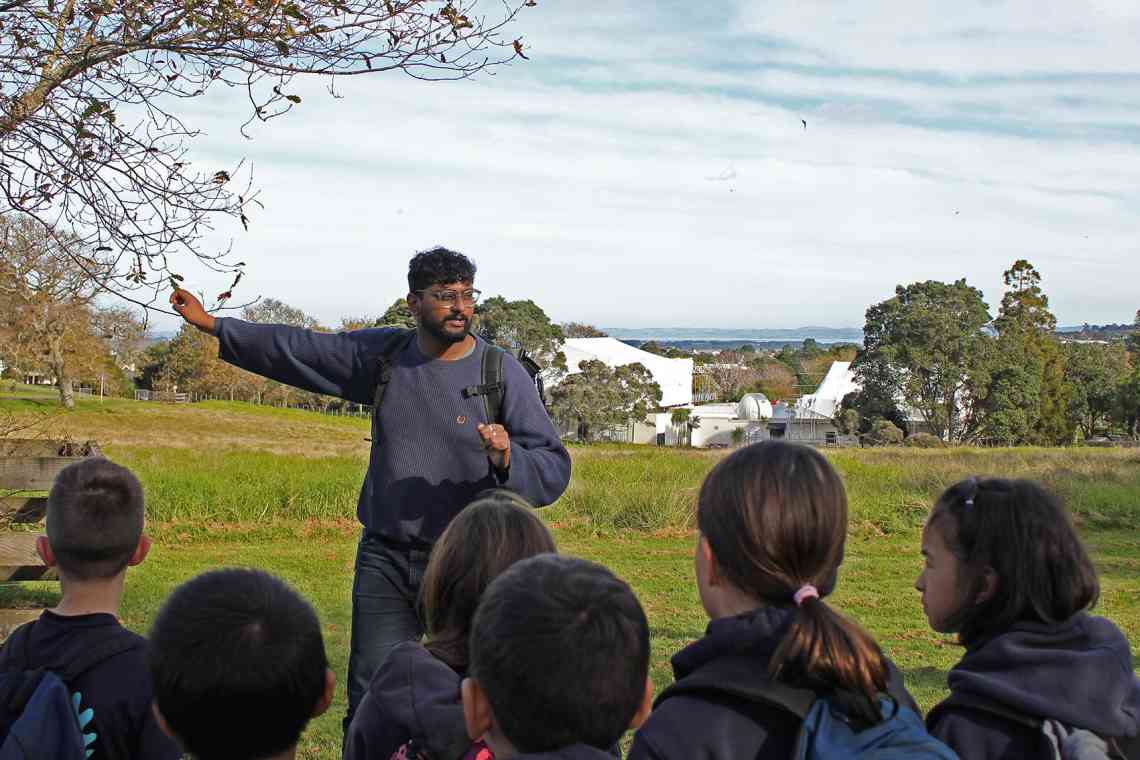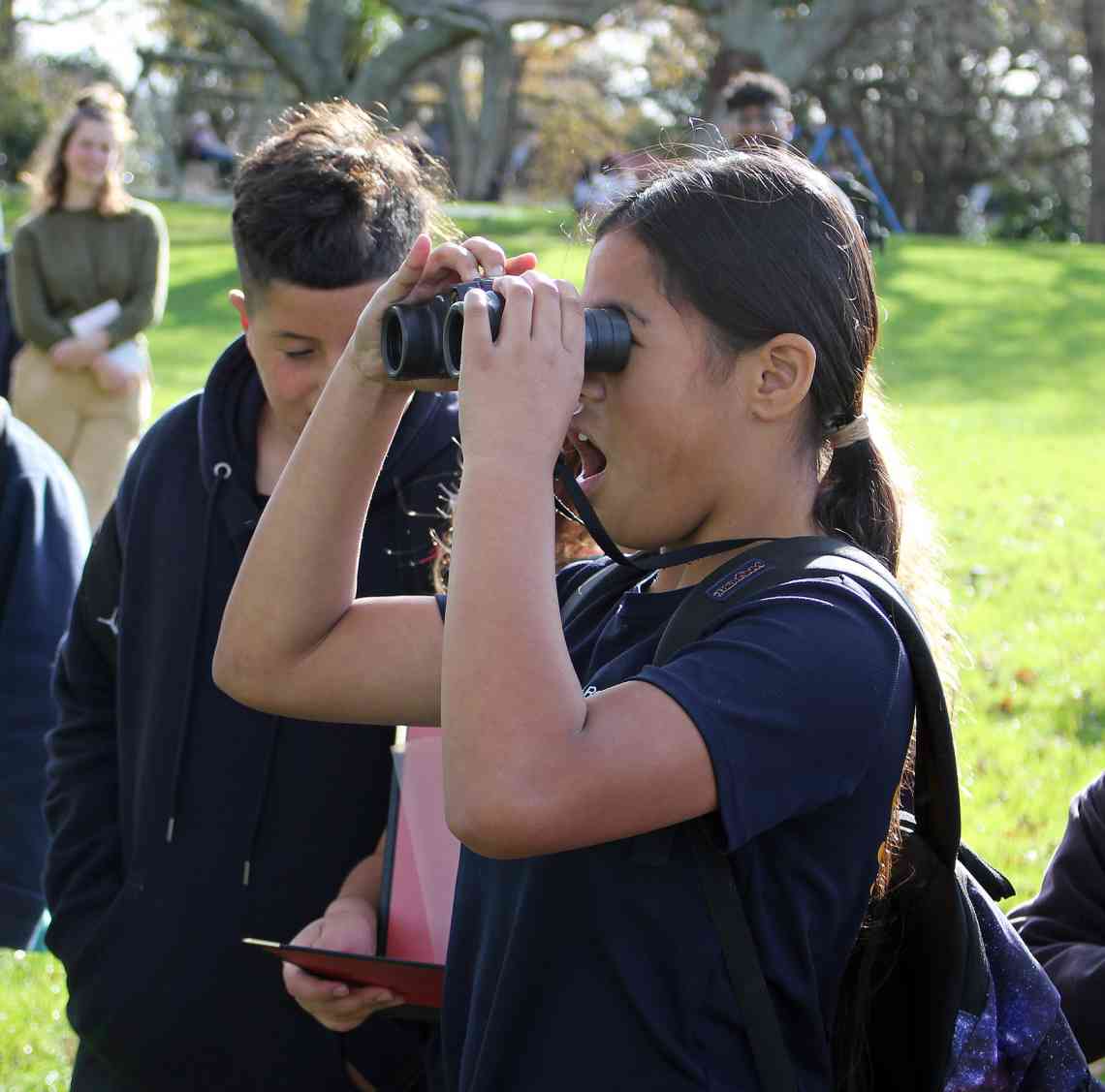
Royal Oak Primary School received $9,500 in Curious Minds funding this year for their ‘Kaitiaki of Maungakiekie’ science research project. Members of the Te Hononga Akoranga COMET STEM team joined the school on a recent hīkoi up the Maungakiekie maunga. Experts from the Tūpuna Maunga Authority and the University of Auckland accompanied the students, advising them on the volcano's rich cultural and geological history and helping them identify the birds on the maunga.
Fifty-five Year 6 eco-warriors received a guided tour of Maungakiekie by Shiv, Jordan and Anika from the Tūpuna Maunga Authority. The team directed the students up the mountain, teaching them about the rich cultural and geological history of this dormant volcano. The students learned about the importance of staying on the guided driveways and footpaths so as not to disturb the ancient pā sites, archeological remains and bird nesting sites that may exist among the overgrown areas.
The rōpū was also joined by ecologists from the University of Auckland, Dr Kristal Cain and Juliane Mussoi, who taught the students about the extensive fauna that exists in the area. Students would take short breaks to identify birds they found on their hīkoi or to listen out for bird songs when they couldn’t be seen. Bird monitoring is the key driver behind this research project, and students were very excited to use binoculars to try and spot birds.
Educational experiences outside of the classroom provide exceptional value for students. WeSTEM project manager Sneh Patel explains: “Providing opportunities for tamariki to learn science outside of the classroom is important in teaching the role of science in our lives. Working with real scientists from Tūpuna Maunga Authority and the University of Auckland helps to reinforce the role these students are playing as little scientists, as they are using the same tools, conducting the same experiments as the professionals and their data will be used by them to inform conservation work on the maunga in the future. This project is especially important in setting these students up as leaders and kaitiaki of their local environment.”

For the next steps in their research project, students will install birdsong monitors on the maunga to track and identify the birds that are coming to the area and their migratory behaviour. This will help them to learn about the role Maungakiekie plays as a “rest space” for birds flying across Tāmaki Makaurau’s wildlife corridor. Students will use birdsong as an indicator of bird population health and diversity, and they hope to see (and hear) increasingly vibrant and thriving bird populations as the kura and community work together on ongoing pest control efforts.